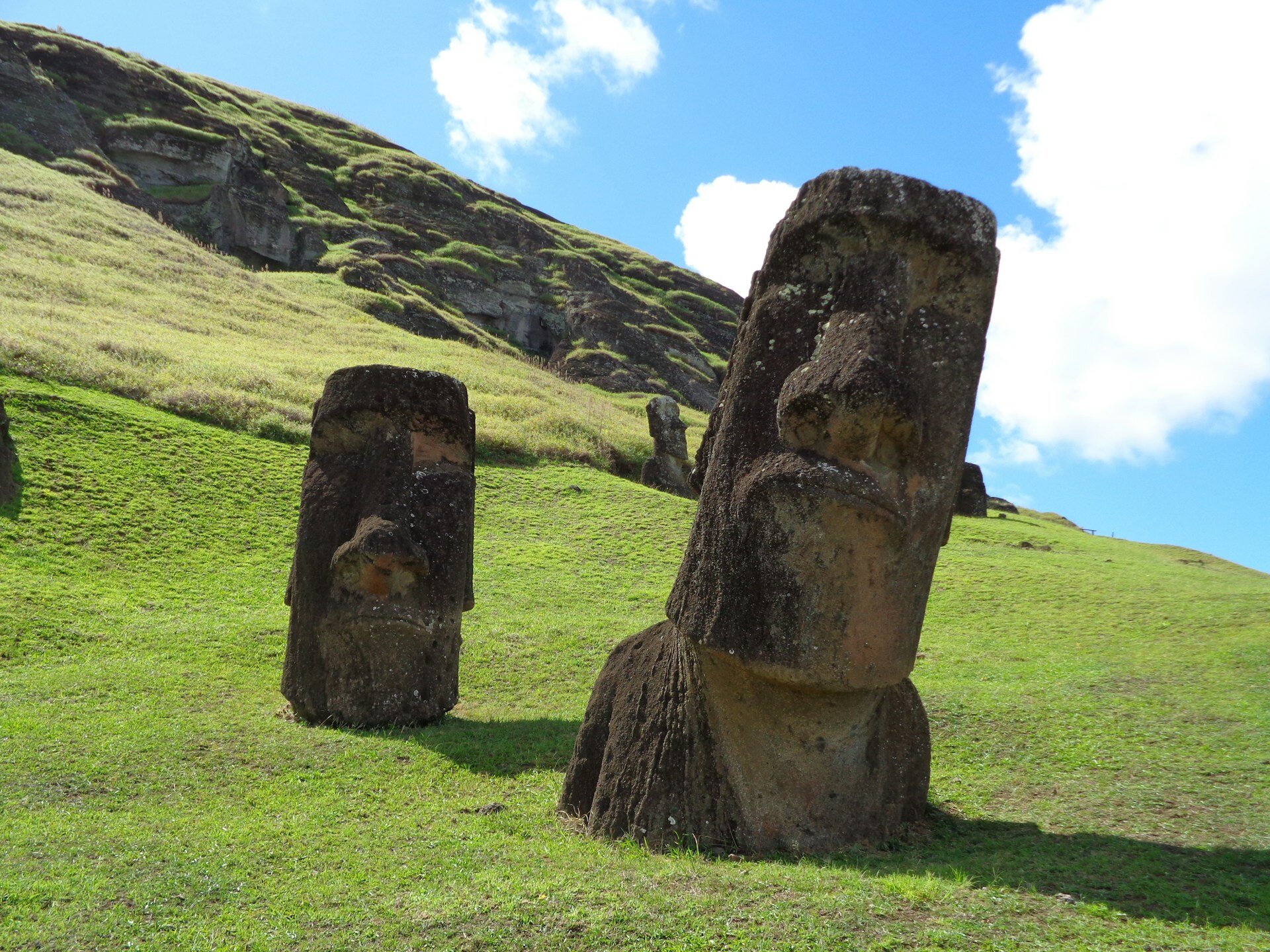Easter Island is arguably the remotest inhabited spot on Earth, and one of the last to be settled by humans, if not the last. The nearest continental landmass is central Chile, nearly 2,200 miles to the east. Some 3,200 miles to the west lie the tropical Cook Islands, where settlers are thought to have sailed from around 1200 CE.
The 63-square-mile island is made entirely of volcanic rock, but unlike lush tropical islands such as Hawaii and Tahiti, eruptions ceased hundreds of thousands of years ago, and mineral nutrients brought up by lava have long since eroded from soils.
To cope, the settlers used a technique called rock gardening, or lithic mulching. This consists of scattering rocks over low-lying surfaces that are at least partly protected from salt spray and wind. In the interstices between rocks, they planted sweet potatoes.
Research has shown that rocks from golf ball–size to boulders disrupt drying winds and create turbulent airflow, reducing the highest daytime surface temperatures and increasing the lowest nighttime ones. Smaller bits, broken up by hand, expose fresh surfaces laden with mineral nutrients that get released into the soil as they weather.
However, based on isotopes found in bones and teeth and other evidence, people in the past probably managed to get 35% to 45% of their diet from marine sources, and a small amount from other less nutritious crops including bananas, taro and sugar cane. Factoring in these sources would have raised the population carrying capacity to about 3,000―the number observed upon European contact.



Studying the isotopes from skeletons from the supposed peak would show the percentage obtained from the rock gardens was consistent with the post collapse population